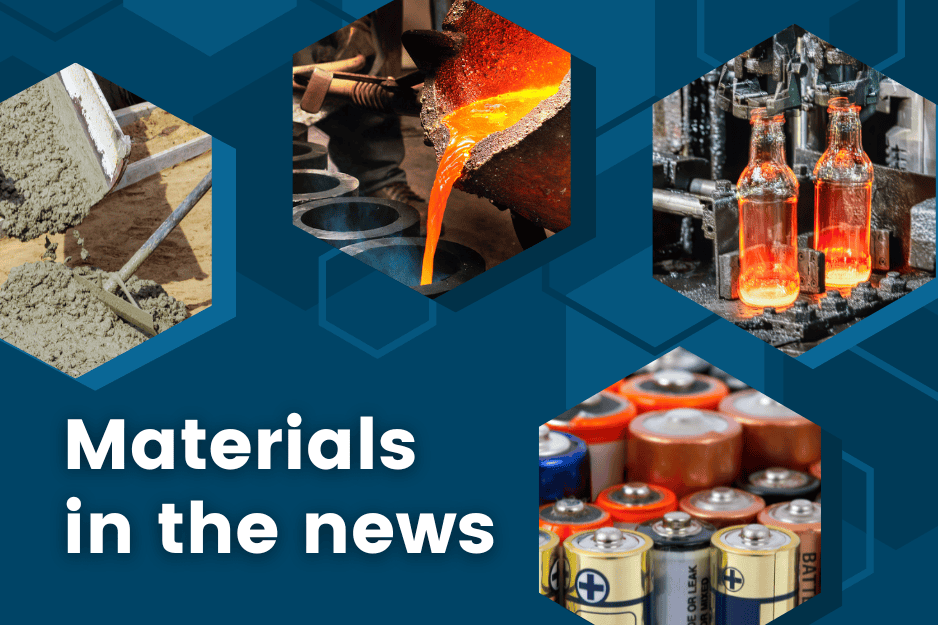
[Images above] Credit: NIST
NANOMATERIALS
Scientists observe composite superstructure growth from nanocrystals in real time
Researchers led by the University of Pennsylvania and the University of Michigan observed in real time how two types of nanoparticles made from different materials combine into new composite materials.
Organic-solvent-free method for producing nanosized vaterite
Researchers from Korea Maritime & Ocean University developed a three-stage process for synthesizing nanosized vaterite particles with the help of seawater, sucrose, ultrasonication, and aging. This method, which produces vaterite particles as small as 683 nanometers, eliminates the need for organic solvents.
ENERGY
3D-printed ceramic structures will improve fuel cells to make better use of natural gas
Researchers at Skolkovo Institute of Science and Technology used an inexpensive 3D-printing technique to manufacture a highly complex ceramic structure that could maximize the ionic conductivity in solid oxide fuel cells.
New designs for solid-state electrolytes
Institute for Basic Science researchers looked at the distribution of metal ions in chloride electrolytes and used this information to develop strategies for electrolyte design that mitigates some conflicting factors.
Researchers use chlorine gas to recover lithium from battery anodes
Researchers at Korea Atomic Energy Research Institute used chlorine gas to recover about 97% of the lithium from ground-up battery anodes. Anode components made from the recycled metals showed an increased lifespan.
Graphene’s proton permeability: A switch for future energy technologies
Researchers from the National Graphene Institute at the University of Manchester discovered a way to use light to accelerate proton transport through graphene, which could revolutionize hydrogen generation.
BIOMATERIALS
New hydrogels for wound management
Incheon National University researchers developed a new type of gelatin-based tissue adhesive hydrogel that locally generates oxygen through a reaction mediated by calcium peroxide, which improves the adhesiveness of the material and greatly enhances the healing process.
Metal-enhanced fluorescence probes for influenza a virus detection
Gwangju Institute of Science and Technology researchers demonstrated that fluorescence-based lateral flow immunoassay, when enhanced by gold-nanorod-based probes, could accurately and rapidly detect an influenza virus protein without the need for complex diagnostic laboratory equipment.
MANUFACTURING
Researchers demonstrate new 3D printing technique for quantum sensors
Researchers at the University of California, Berkeley used additive manufacturing methods to produce highly customizable 3D structures that can host tiny diamonds containing quantum sensing elements.
Borrowing semiconductor industry know-how to make better batteries
Argonne National Laboratory researchers used atomic layer deposition to coat an argyrodite electrolyte in powder form. Other researchers have previously used the technique to coat the argyrodite after the powder form is processed into pellets, but this approach will not work for large-scale solid-state battery manufacturing.
OTHER STORIES
Optical-fiber-based single-photon light source for next-generation quantum processing
Researchers in Japan developed a single-photon light source consisting of doped ytterbium ions in an amorphous silica optical fiber at room temperature. This newly developed single-photon light source eliminates the need for expensive cooling systems and has the potential to make quantum networks more cost-effective and accessible.
Researchers discover new ultrastrong material for microchip sensors
Researchers at Delft University of Technology fabricated a wafer-scale amorphous thin film of silicon carbide. It has the highest ultimate tensile strength ever measured for a nanostructured amorphous material, of more than 10 GPa.
Researchers advance high-temperature superconductivity in carbon materials
Using first-principles calculations, researchers at Shenzhen Institute of Advanced Technology of the Chinese Academy of Sciences crafted carbides with the structural characteristics of carbon-cage networks. Their simulations surpassed the superconducting transition temperatures of conventional carbides.
Novel technique to observe molten salt intrusion in nuclear-grade graphite
Oak Ridge National Laboratory researchers developed a novel technique to visualize molten salt intrusion in graphite. Preventing molten salt intrusion avoids additional issues with waste management during nuclear reactor decommissioning.
Solid-state thermal transistor for better heat management
Researchers at the University of California, Los Angeles unveiled a first-of-its-kind stable and fully solid-state thermal transistor that uses an electric field to control a semiconductor device’s heat movement.
Student opportunity: Second São Carlos School on Glasses and Glass-ceramics
The São Carlos Center for Research, Technology, and Education in Vitreous Materials is organizing the second School on Glasses and Glass-ceramics from April 29–May 4, 2024. The school will accept up to 60 Ph.D. students worldwide. There is no registration fee for the school. Interested students must contact the organizers by email before Dec. 15, 2023.
Author
Lisa McDonald
CTT Categories
- Weekly Column: “Other materials”
